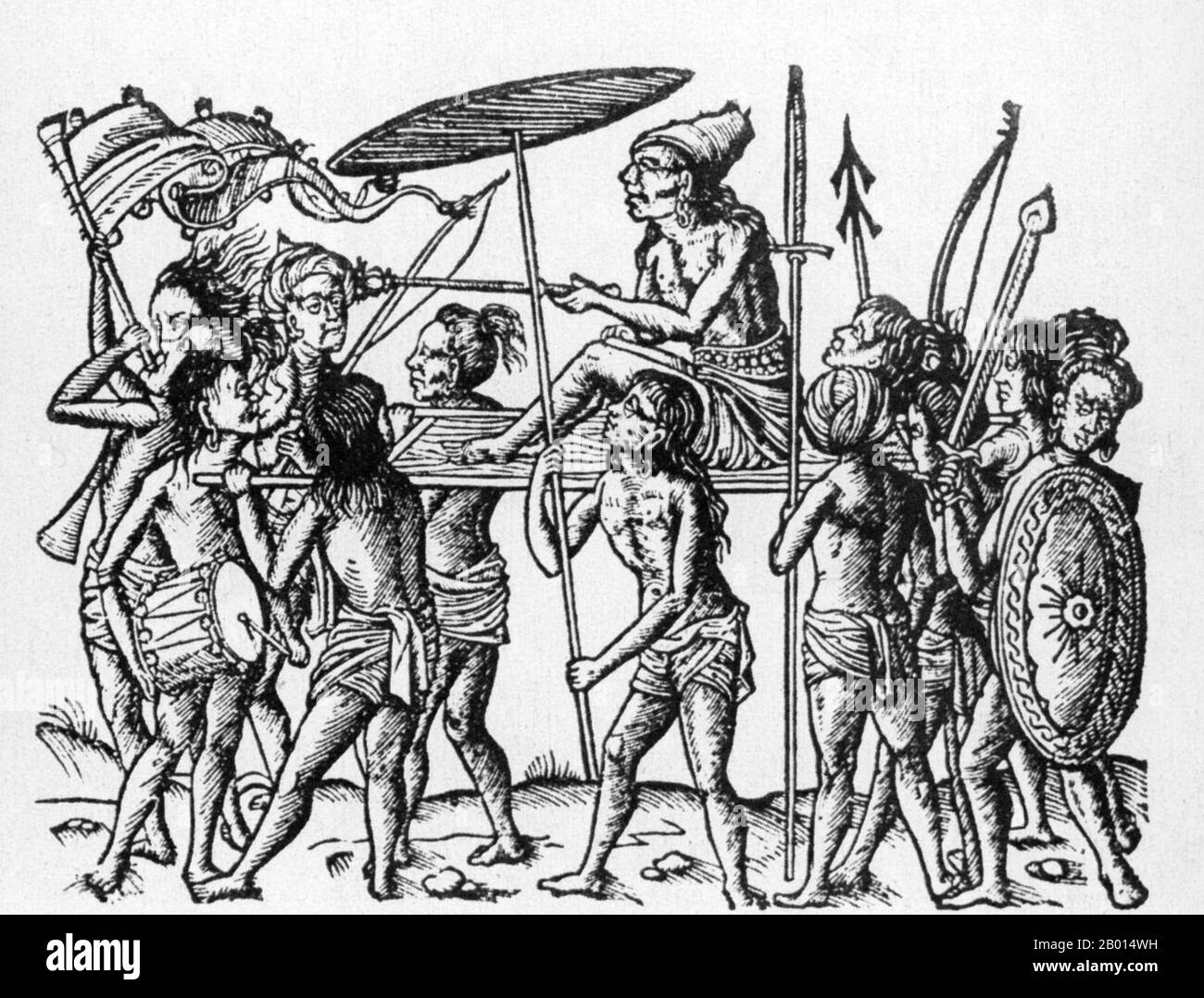Portugal/India: The ruler of Cochin, depicted at the time of his meeting with Portuguese explorer Pedro Alvares Cabral in 1500 CE. Following Portuguese navigator Vasco da Gama's success in discovering a sea route around Africa to India in 1498, King Manuel I commissioned Pedro Alvares Cabral to lead a second voyage of 13 ships and 1,500 men to India. Although he intended to stay close to the west coast of Africa, Cabral sailed far off course and accidentally chanced upon the coast of South America.

Image details
Contributor:
CPA Media Pte Ltd / Alamy Stock PhotoImage ID:
2B014WHFile size:
50.1 MB (1.8 MB Compressed download)Releases:
Model - no | Property - noDo I need a release?Dimensions:
4800 x 3649 px | 40.6 x 30.9 cm | 16 x 12.2 inches | 300dpiPhotographer:
Pictures From HistoryMore information:
This image could have imperfections as it’s either historical or reportage.
Following Portuguese navigator Vasco da Gama's success in discovering a sea route around Africa to India in 1498, King Manuel I commissioned Pedro Alvares Cabral to lead a second voyage of 13 ships and 1, 500 men to India. Although he intended to stay close to the west coast of Africa, Cabral sailed far off course and accidentally chanced upon the coast of South America. According to the Treaty of Tordesillas of 1494, any land falling within 370 leagues [2.060 km] west of the Cape Verde Islands was to belong to Portugal, whereas any land discovered west of this meridian would be Spanish territory, as decreed by Spanish-born Pope Alexander VI. The coastline of Brazil therefore fell within the Portuguese sphere of influence and was colonized by Manuel I. Cabral left two men there as ambassadors and continued across the south Atlantic, rounded the Cape of Good Hope, fought off Arab merchants in East Africa, and finally reached Calicut in India in September 1500.